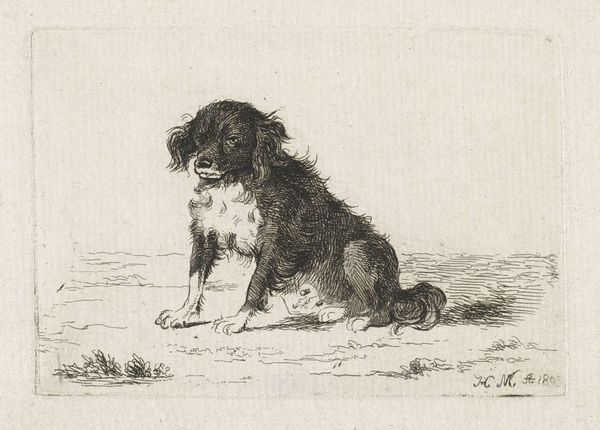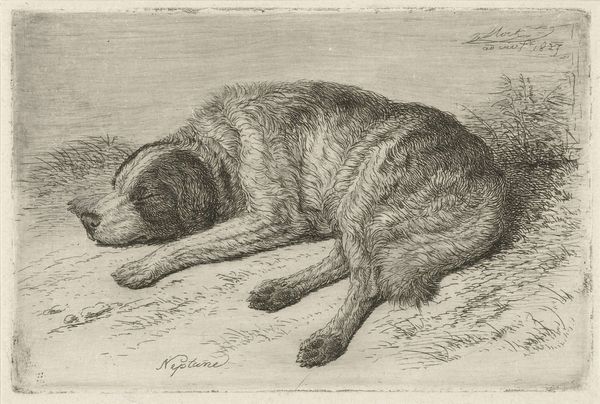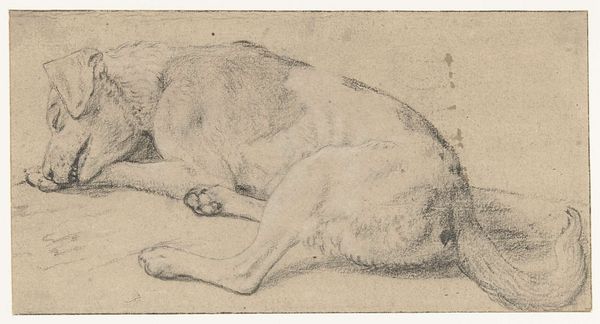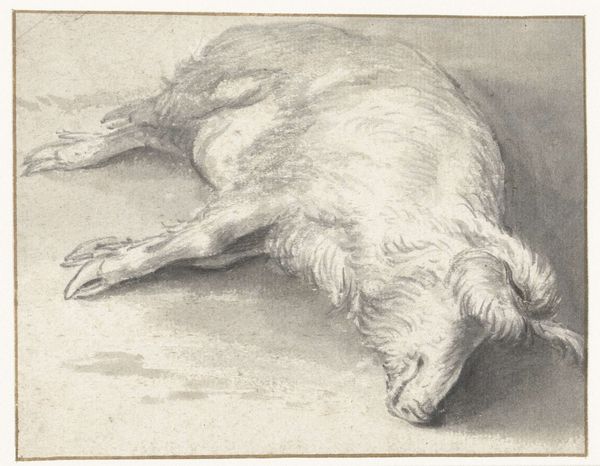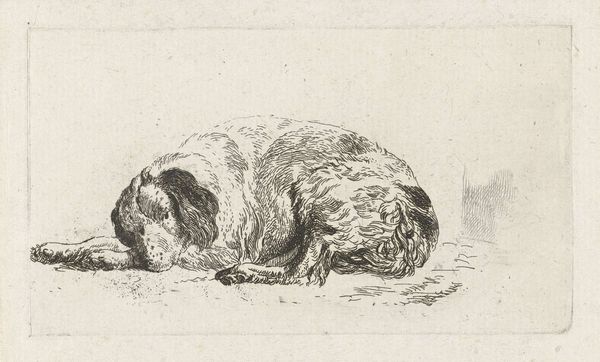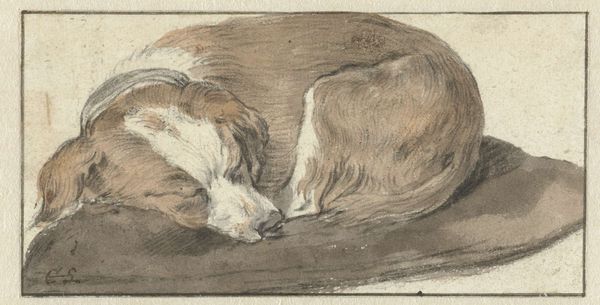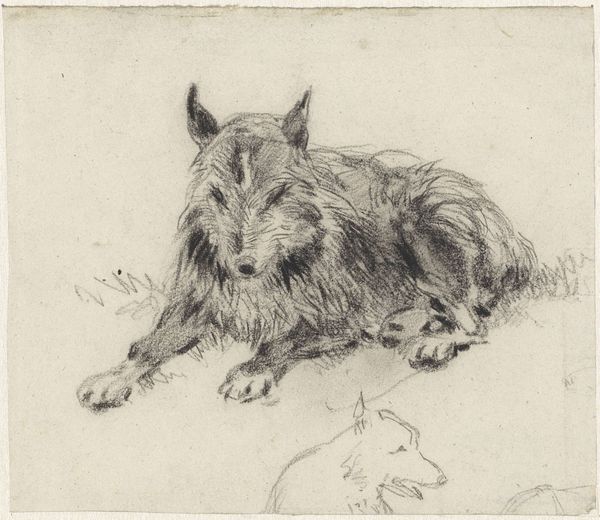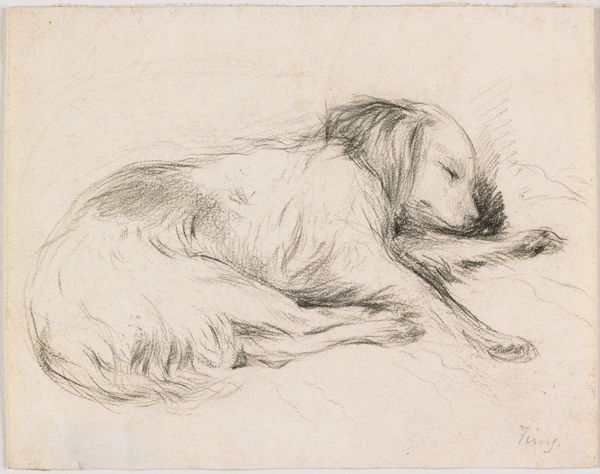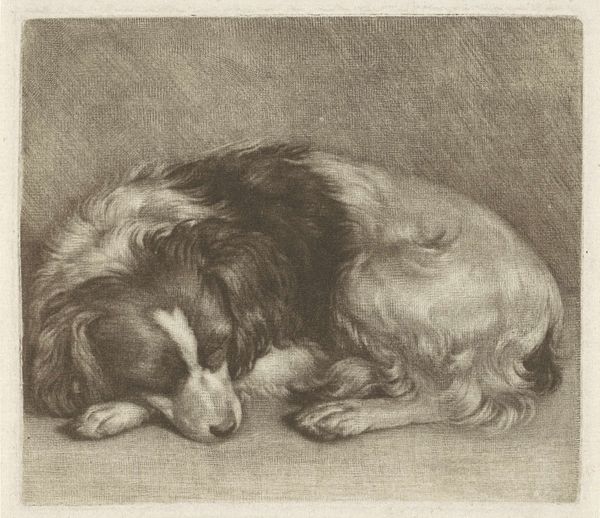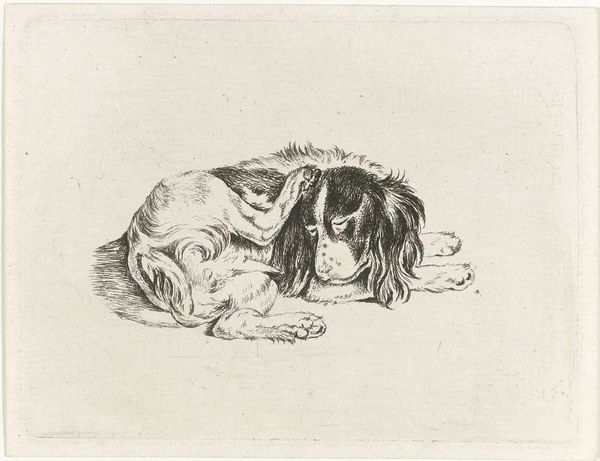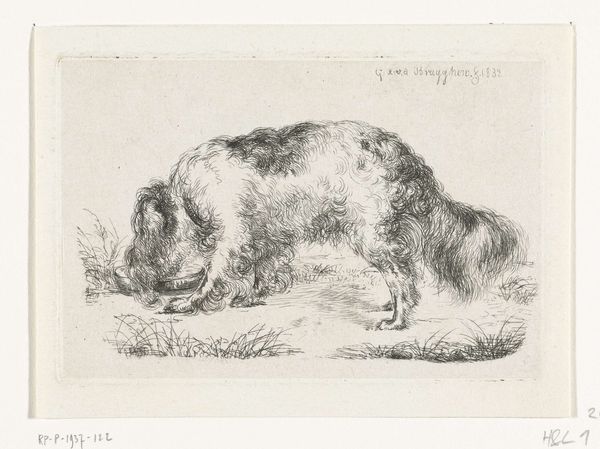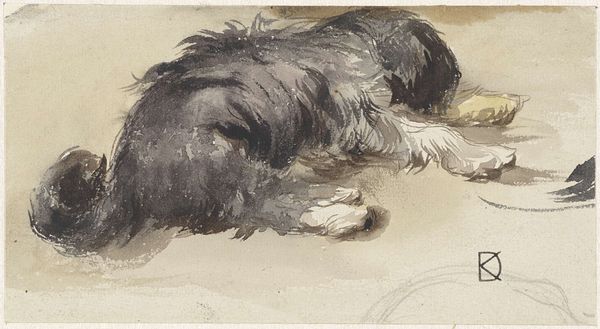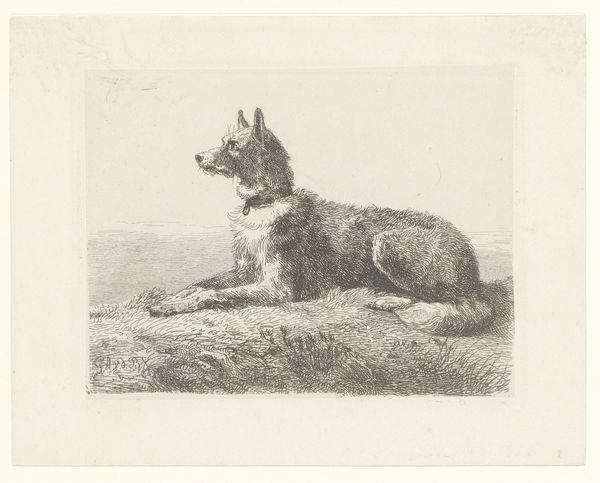
Dimensions: height 85 mm, width 110 mm
Copyright: Rijks Museum: Open Domain
Editor: This etching, "Slapende Hond" or "Sleeping Dog," created sometime between 1752 and 1783 by Hendrik Godart de Marée, presents a wonderfully vulnerable image. There's such fragility in the rendering. How do you see it? Curator: It's the fragility arising from the directness of its production. Etching, a relatively democratic printmaking method at the time, allowed for wider dissemination of imagery. Consider who could then consume such images and where? What purpose might a small etching like this serve in a domestic space during the late 18th century? Editor: Well, perhaps for studies, sketches to guide painting later on? The line work looks almost spontaneous. Curator: Exactly! The medium itself allows for the possibility of the image becoming reproducible. In baroque art, how were images of animals perceived within social and material contexts? Was this image designed as mere decor, or did the presence of domestic animals offer greater purpose and insight in the late 1700s? Editor: I guess I hadn't really considered the context in which these images would circulate and function! I suppose seeing animals in art makes me think only of pets and comfort. But, the act of reproduction itself meant wider access, which does signal an expansion of art for other social needs. Curator: Precisely. By studying the labor involved, and considering the accessibility the medium afforded, we see that this work potentially challenged the existing definitions of art, use, and social boundaries of the time. Editor: That adds so much more to my understanding and appreciation of this tiny etching. Curator: Mine too. Thanks for letting me bounce around some ideas.
Comments
No comments
Be the first to comment and join the conversation on the ultimate creative platform.

